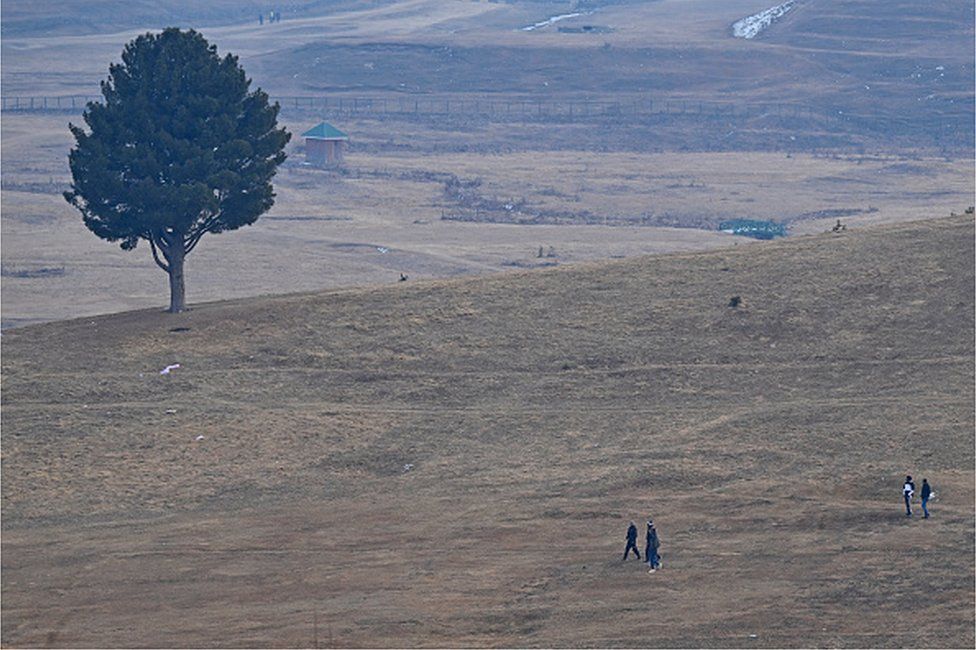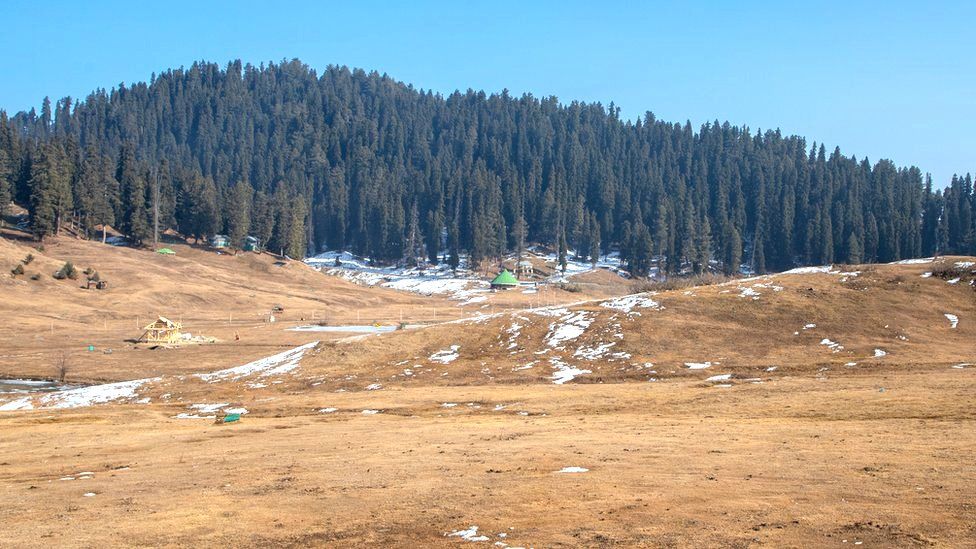Wild Weather, the Wobble Effect
Giant waves crash over seawalls during a storm
in the suburbs of Taipei, Taiwan. 21.10.2025
"We warned at the start of ZetaTalk, in 1995, that unpredictable weather extremes, switching about from drought to deluge, would occur and increase on a lineal basis up until the pole shift. Where this occurred steadily, it has only recently become undeniable. ZetaTalk, and only ZetaTalk, warned of these weather changes, at that early date. Our early warnings spoke to the issue of global heating from the core outward, hardly Global Warming, a surface or atmospheric issue, but caused by consternation in the core. Affected by the approach of Planet X, which was by then starting to zoom rapidly toward the inner solar system for its periodic passage, the core was churning, melting the permafrost and glaciers and riling up volcanoes. When the passage did not occur as expected in 2003 because Planet X had stalled in the inner solar system, we explained the increasing weather irregularities in the context of the global wobble that had ensued - weather wobbles where the Earth is suddenly forced under air masses, churning them. This evolved by 2005 into a looping jet stream, loops breaking away and turning like a tornado to affect the air masses underneath. Meanwhile, on Planet Earth, droughts had become more intractable and deluges positively frightening, temperature swings bringing snow in summer in the tropics and searing heat in Arctic regions, with the violence of storms increasing in number and ferocity."
ZETATALK
Wild Weather, the Wobble Effect - Earth Changes and the Pole Shift
Comment
-
Comment by Juan F Martinez on June 25, 2025 at 6:28am
-
Largest flood on record!
China floods force 80,000 to flee; Guizhou football field buried under three metres of water.
The Duliu River in Rongjiang, Guizhou in China just saw its most extreme flood ever, with water surging at 11,400 cubic meters per second and rising a staggering 11 meters above normal levels!
Video: https://x.com/ZT_Followers/status/1937727103132405883
@malaymail @yangyubin1998
-
Comment by Juan F Martinez on May 26, 2025 at 4:27pm
-
MONSTER SIZE HAIL REPORTS
New Madrid adjustments create rising and falling land masses that develop powerful upper-level atmospheric disturbances and apocalyptic historic hailstorms.
https://www.msn.com/en-us/weather/topstories/massive-dvd-sized-hail...
How bad will it get?
"And great hailstones, about one hundred pounds each, fell from heaven on people; and they cursed God for the plague of the hail, because the plague was so severe." Revelation 16:21
"Revelation 8:7, hail and fire mixed with blood are hurled down upon the earth, burning a third of the earth, trees, and green grass."
Worlds in Collision, pp 51-53
The Hail of Stones - Following the red dust, a small dust, like ashes of the furnace fell in all the land of Egypt, and then a shower of meteorites flew toward the earth. We are informed by Midrashic and Talmudic sources that the stones which fell on Egypt were hot. Ipuwer wrote: Trees are destroyed. No fruits, no herbs are found. Grain has perished on every side. In the Book of Exodus it is written: And the hail smote every herb of the field, and brake every tree of the field. The description of such a catastrophe is found in the Visuddhi-Magga, a Buddhist text on the world cycles. When a world cycle is destroyed by wind .. there arises .. a wind. First it raises a fine dust, then coarse dust, then fine sand, then coarse sand, then grit, stones, up to boulders as large as trees. The Mexican Annals of Cuauhtitlan describe how a cosmic catastrophe was accompanied by a hail of stones.The Devastating Tail of Planet X
https://www.zetatalk.com/index/blog0524.htm
-
Comment by Tracie Crespo on May 17, 2025 at 4:50pm
-
At least 21 dead in Missouri, Kentucky as severe storms sweep centr...
At least 21 dead in Missouri, Kentucky as severe storms sweep central U.S.
Story by
At least 21 dead in Missouri, Kentucky as severe storms sweep central U.S.© Lawrence Bryant/ReutersAt least 21 people have died after severe storms swept through the central United States, with possible tornadoes touching down in Missouri and Kentucky, according to authorities.
Fourteen people were killed in Kentucky, according to Gov. Andy Beshear. A tornado touched down in Laurel County at 11:49 p.m., with “numerous” more suffering severe injuries, the Laurel County Sheriff’s Department said in a social media post on Saturday.
With rescue teams continuing the search for survivors, Beshear warned that the death toll “is expected to grow.” Five counties have declared a state of emergency — Beshear had declared an emergency for the entire state the day before — and more than 100,000 customers are without power, Beshear said.Further west in Missouri, hundreds of miles from the destruction in Kentucky, five people were killed in severe weather in St. Louis, city officials said. Meteorologists have not yet confirmed reports of a tornado, with the National Weather Service St. Louis saying that damage reports and radar imagery suggests one had “likely occurred.” At a news conference Friday, St. Louis Fire Chief Dennis Jenkerson described at a path of destruction that began on a major thoroughfare during afternoon rush hour before moving east over a river into southern Illinois.
More than 5,000 homes suffered damage, St. Louis Mayor Cara Spencer said at the same news conference, as rescue teams worked to locate missing people and search the debris.“Our city is grieving tonight,” Spencer said. “The loss of life and destruction is truly horrendous.”
More than 100 miles south, Scott County Sheriff Derick Wheetley said a tornado on Friday struck several rural areas in the southern region of the Missouri county, killing two, injuring several more and “leaving behind a trail of destruction, with multiple homes completely lost and areas left unrecognizable.”
Friday’s destruction marked the third-straight day of significant severe weather, with more threats predicted through the weekend. Severe thunderstorms across the Great Lakes region late Thursday had knocked out power to some 284,000 customers as of Saturday morning, with Michigan suffering a large concentration of power loss, according to PowerOutage.us. In Wisconsin, a visibly striking tornado spun through fields in New Richmond, while another caused significant damage in Hammond. In the capital of Madison, a hailstorm dropped hail up to two inches in diameter.
The National Weather Service has issued tornado and severe storm warnings throughout the region, and cautioned that much of Kentucky and parts of Tennessee are also under a slight risk (Level 2 of 4 risk) for flooding. The office in Jackson, Kentucky was among those forced to stop staffing overnight shifts following the U.S. DOGE Service-led efforts to shrink the federal government.At least 21 dead in Missouri, Kentucky as severe storms sweep central U.S.The severe weather risk stretches more than 1,200 miles in total, with intense storms predicted to reach as far as East Texas to the Mid-Atlantic through the weekend. After this storm system winds down, another is expected to pick up to the west, with strong tornadoes in the forecast by Sunday for parts of the Plains.
From early Thursday to early Saturday, there have been over 1,500 severe weather reports across 24 states. Nine states have been hit by at least one tornado. The highest number of tornado and wind damage reports have been in Illinois, while the highest number of hail reports have been in Wisconsin.
-
Comment by Tracie Crespo on March 16, 2025 at 3:08pm
-
https://abcnews.go.com/US/live-updates/tornado-outbreak-live-update...
Tornado outbreak live updates: 40 tornadoes, 34 dead in cross-country storm system
Nearly 300,000 are without power across eight states.
-
Comment by James of Idaho on September 26, 2024 at 11:05pm
-
Comment by James of Idaho on August 24, 2024 at 3:38am
-
August 23, 2023-Idaho Weather extremes shall intensify as we get closer to the passage....



https://www.facebook.com/share/p/RQHcancD8p5JczQX/
-
Comment by James of Idaho on August 23, 2024 at 8:37pm
-
Comment by James of Idaho on August 8, 2024 at 9:02pm
-
Comment by Tracie Crespo on May 26, 2024 at 1:31pm
-
https://www.facebook.com/photo/?fbid=1004549281039251&set=a.447...
 BREAKING: A Mass casualty event has been declared at a truck stop shell gas station with up to 150 people trapped with the roof collapsed in Valley View, Texas
BREAKING: A Mass casualty event has been declared at a truck stop shell gas station with up to 150 people trapped with the roof collapsed in Valley View, Texas Emergency crews have just declared a mass casualty event after a large, violent tornado passed through Interstate 35 in Valley View, Texas as Police scanners are reporting that at least 150 people are trapped inside a shell truck stop gas station with a collapsed roof. Multiple injuries are being reported.--------------------------------------------------------------------------------------------------------------------------------------------------------
Emergency crews have just declared a mass casualty event after a large, violent tornado passed through Interstate 35 in Valley View, Texas as Police scanners are reporting that at least 150 people are trapped inside a shell truck stop gas station with a collapsed roof. Multiple injuries are being reported.--------------------------------------------------------------------------------------------------------------------------------------------------------
-
Comment by Yvonne Lawson on January 19, 2024 at 9:59am
-
Kashmir's rare snowless winter sets off alarm bells

Visitors walk along ski slopes usually covered in snow at this time of the year in Gulmarg
In his 17 years of managing a hotel in Gulmarg, a picturesque town in Indian-administered Kashmir, Manzoor Ahmad has never seen a season without snow.
But this year, things are different: the snow-clad mountains in the region are oddly brown and barren.
"This is unprecedented," Mr Ahmad, 50, says, and adds that tourists have stopped making reservations at his hotel.
Every year, thousands of tourists visit Kashmir in winter to enjoy skiing and sightseeing. But the absence of snowfall this year has bought the region's tourism industry to its knees.
Close to 100,000 tourists visited Kashmir last January, but this year that number has reduced by more than half, officials say.
Experts say the snowless winter will have a disastrous impact on the territory's economy as the tourism sector accounts for about 7% of Jammu and Kashmir's GDP. It will also impact farming and water supply as scanty snowfall will not replenish groundwater reserves adequately.
Environmentalists say that climate change has been impacting the region, causing extreme weather events and prolonged dry spells in both winter and summer. Jammu and Kashmir's weather department recorded a 79% rainfall deficit in December and a 100% deficit in January.
The valley is also experiencing warmer weather, with most stations in Kashmir recording a 6-8C (43-48F) rise in temperature this winter.

Otherwise covered with a white carpet of snow, the mountains are brown this winter
Showkat Ahmad Rather, who heads the Ski Association of Gulmarg, echoes this sentiment.
"I have been working as a ski instructor for the past 27 years, I can't switch to doing something else," he says.
Apart from tourism, experts say that the absence of snowfall will also impact generation of hydroelectricity, fisheries and farming.
The neighbouring territory of Ladakh - another popular tourist destination - is also experiencing a snowless winter.
"The farming here is dependent on glaciers. The glaciers are melting at a fast rate. No snowfall in the peak [winter] season means early that spring water will be a big problem," environmentalist Sonam Wangchuk says.
"This is one of the driest spells in the Himalayan region," Sonam Lotus, director of the Meteorological Centre in Leh, says. Irfan Rashid, an assistant professor at University of Kashmir, adds that a drought like situation "can't be ruled out".
The region normally receives heavy snowfall during peak winter - a 40-day period that lasts from 21 December to 29 January. During this time, mountains and glaciers get covered with snow and this ensures water supply throughout the year.
Read more: https://www.bbc.co.uk/news/world-asia-india-68015106
SEARCH PS Ning or Zetatalk
This free script provided by
JavaScript Kit
Donate
© 2025 Created by 0nin2migqvl32.
Powered by
![]()
You need to be a member of Earth Changes and the Pole Shift to add comments!
Join Earth Changes and the Pole Shift